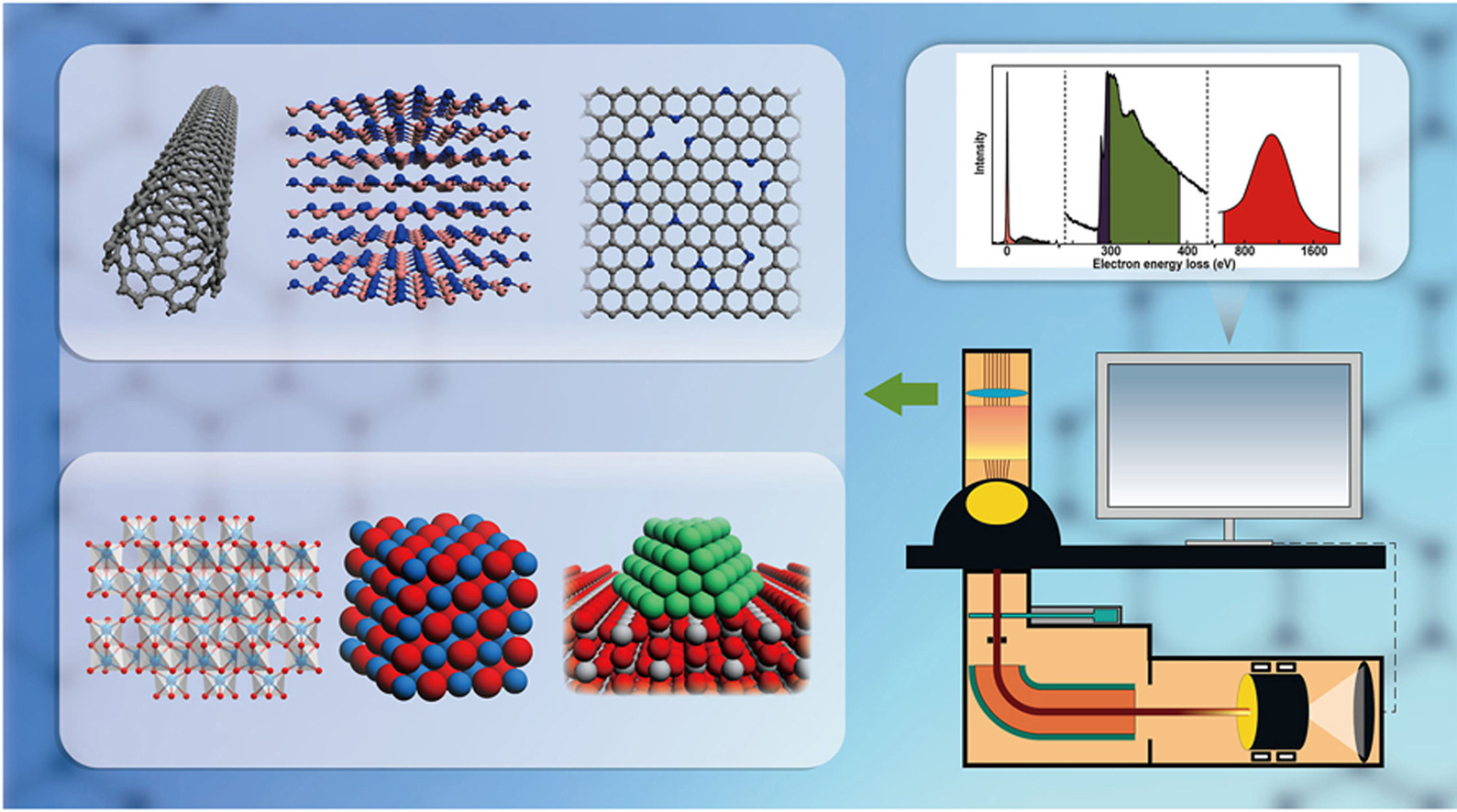• EELS probes fine structures of low-Z catalysts, including non-metals and transition metals, with high sensitivity.
• EELS principles and advantages are summarized, highlighting its spatial resolution and sensitivity to low-Z elements.
• EELS strategies for analyzing the spatial distribution, environments, and properties of low-Z elements are discussed.
• Future perspectives on EELS include its integration with simulations, EXELFS, and in-situ TEM for dynamic studies.
Low atomic number catalysts have gained widespread application in areas such as environmental management, catalytic reactions, and energy transformation, thanks to their cost-effectiveness and superior chemical stability. An in-depth exploration of the intricate structures of these catalysts, establishing their structure-activity relationships, and revealing their catalysis mechanisms are fundamental for developing novel and efficient catalysts. Electron energy loss spectroscopy (EELS), a pivotal electron microscopy technique, uniquely excels in dissecting the fine structures of low atomic number catalysts, since its high spatial resolution and acute sensitivity to elements with low atomic numbers. This review summarizes the role of EELS in probing the fine structures of low-Z catalysts, encompassing the technological underpinnings, advantages, and specific use cases in catalyst analysis. EELS can pinpoint the location, chemical surroundings, and electronic attributes of low-Z elements in catalysts, thus offering crucial insights for demystifying catalytic mechanisms and formulating innovative catalysts. Furthermore, this review delves into the potential advancements of EELS technology in the detailed structural study of low atomic number catalysts, hinting at a promising future for this research field.

